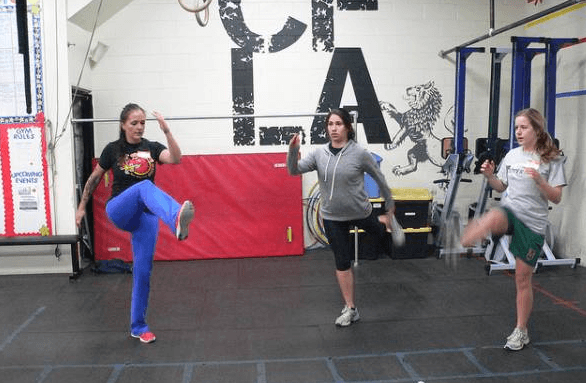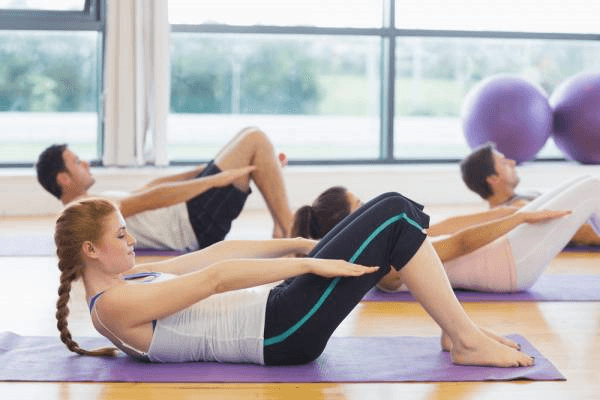Coordination plays a vital role in our everyday lives, affecting our ability to perform simple tasks like walking and reaching as well as our performance in sports and physical activities. By improving coordination, we can enhance our agility, balance, and motor skills. This article will delve into the top 10 coordination exercises designed to boost your physical performance. These exercises are not only beneficial for athletes and fitness enthusiasts but can also improve daily life activities.
Understanding Coordination and Its Benefits
Coordination refers to the harmonious interaction of different body parts and movements to perform a specific action effectively and efficiently.
When participating in sports, coordination plays a crucial role in executing precise movements, such as throwing a ball, hitting a tennis ball, or performing complex dance routines. By improving coordination, athletes can fine-tune their movements, leading to improved accuracy, speed, and overall performance.
Reducing the risk of injuries is another significant benefit of coordination exercises. When our body parts work together seamlessly, we have better control over our movements, reducing the likelihood of tripping, falling, or experiencing accidents.
Additionally, coordination exercises help improve our balance and agility. By training our bodies to maintain stability and react quickly to changes in our environment, we can navigate obstacles more effectively, whether it’s on a sports field or during daily activities.

Preparing for Coordination Training
Before diving into coordination exercises, it’s essential to warm up adequately to prepare your body for the physical demands. Incorporating dynamic stretches and mobility exercises into your warm-up routine can help increase blood flow, loosen up muscles, and improve joint mobility. Warming up not only helps prevent injuries but also primes your body for optimal performance during coordination exercises.
Following safety tips and injury prevention guidelines is crucial when engaging in coordination exercises. Ensure that you have appropriate footwear and any necessary protective gear. Start with exercises that match your current fitness level and gradually progress to more challenging ones as you build strength and coordination.
Setting realistic goals is essential to stay motivated throughout your coordination training. Break down your goals into smaller milestones and celebrate each achievement along the way. By setting realistic expectations, you can track your progress and maintain a positive mindset as you work towards enhancing your coordination skills.
The 10 Best Coordination Exercises to Enhance Your Physical Performance
1. Jump Rope
Jump rope is a fantastic exercise for improving coordination, endurance, and cardiovascular health. It requires precise timing and coordination between your hands and feet.
To get started, choose a rope of appropriate length, ensuring that it reaches your armpits when you stand on it. Begin with basic jumps, gradually progressing to more advanced techniques like double unders and crisscrosses.
One of the common mistakes beginners make is jumping too high. Focus on keeping your jumps low and consistent. Additionally, avoid locking your knees and maintain a relaxed rhythm as you jump. With regular practice, you’ll improve your coordination skills and reap the many benefits of jump rope exercise.
2. Balance Beam Walks
Walking on a balance beam is an excellent exercise for improving core stability and coordination. If you don’t have access to a balance beam, you can use a line on the floor to simulate one. Start with a low beam or a line that is wider and gradually progress to a narrower beam as your balance and coordination improve.
Focus on maintaining a steady, controlled stride as you walk across the beam or line. Engage your core muscles to keep your balance, and keep your gaze fixed ahead to help stabilize your body. As you become more proficient, you can increase the difficulty by incorporating additional movements like lunges or squats while walking on the balance beam.
3. Juggling
Juggling is not only a fun activity but also an excellent way to enhance hand-eye coordination, reflexes, and cognitive abilities. It challenges your brain to process visual information quickly and coordinate precise movements with your hands.
To start juggling, begin with two balls and gradually add more as you become comfortable. Practice tossing and catching the balls in various patterns, challenging yourself to increase the complexity over time.
The key is to focus on the balls’ trajectory without getting overwhelmed. Juggling can also have cognitive benefits, such as improving focus, concentration, and spatial awareness.
4. Ladder Drills
Ladder drills are a popular choice for improving footwork, coordination, and agility. Set up an agility ladder on the ground and perform various patterns, such as side steps, high knees, and lateral hops. These drills enhance quickness, change of direction, and body control.
Start with simpler ladder patterns and gradually progress to more advanced ones as you become more comfortable. Focus on proper form and maintain a quick and light footwork rhythm.
As you progress, increase the speed and challenge yourself with more complex ladder patterns. Ladder drills are widely used in sports training to enhance coordination and improve performance on the field or court.

5. Hand-Eye Coordination Drills
Hand-eye coordination is a critical skill for various sports and daily activities. Simple drills like throwing and catching a ball against a wall or playing catch with a partner can significantly improve this skill. The key is to focus on the object’s trajectory, anticipate its movement, and coordinate your hand movements accordingly.
Start with larger and softer balls to build confidence and gradually progress to smaller or faster-moving objects. Incorporate movements like shuffling or jumping while catching and throwing to challenge your coordination abilities further.
Regular practice of hand-eye coordination drills will enhance your ability to coordinate your hand movements with visual cues, leading to improved performance in sports and everyday tasks.
6. Mirror Movements
Mirror movements are an excellent partner exercise that enhances coordination, symmetry, and reflexes. Stand facing your partner and take turns leading a series of movements. The goal is to mirror each other’s actions as closely as possible, promoting synchronization and coordination between the two individuals.
Begin with simple movements like raising your arms, clapping, or marching in place. Gradually progress to more complex movements, incorporating bilateral movements that require coordination between both sides of your body. This exercise not only improves coordination but also promotes teamwork and communication.
7. Stability Ball Workouts
Stability balls, also known as Swiss balls, provide an unstable surface that challenges your balance, coordination, and overall core strength. Incorporating stability ball exercises into your routine engages multiple muscle groups, including the deep stabilizing muscles of your core.
Exercises such as stability ball squats, planks, and bridges require you to maintain balance while performing the movements, enhancing coordination and core stability simultaneously. As you become more proficient, you can progress to more dynamic movements like stability ball rollouts or single-leg exercises to further challenge your coordination abilities.
8. Tai Chi Sequences
Tai Chi is a traditional Chinese martial art that emphasizes fluid movements, deep breathing, and meditation. Practicing Tai Chi sequences improves coordination, balance, flexibility, and overall mind-body connection. The slow, deliberate movements require precise coordination between different parts of your body, promoting harmony and flow.
Start with basic forms and gradually progress to more complex sequences as you become more proficient. Tai Chi sequences engage your entire body and help you develop a heightened sense of body awareness. The focus on deep breathing also enhances relaxation and stress reduction, making Tai Chi a holistic practice for both physical and mental well-being.
8. Plyometric Exercises
Plyometric exercises focus on explosive power and coordination. These exercises involve rapid muscle contractions, such as jumping, hopping, or bounding. Plyometrics enhance the stretch-shortening cycle, which improves coordination and overall athletic performance.
When performing plyometric exercises, it’s important to ensure proper form and gradually increase the intensity to minimize the risk of injuries. Start with exercises like squat jumps and box jumps, focusing on landing softly and absorbing the impact through your muscles. As you become more proficient, you can progress to more advanced plyometric exercises like depth jumps or single-leg bounds.
10. Yoga Poses for Balance
Yoga poses that challenge balance, such as tree pose, warrior III, and half-moon pose, are excellent for improving coordination and body awareness. These poses require focus, concentration, and engagement of various muscle groups to maintain stability.
Incorporating these poses into your yoga practice can enhance your coordination skills and mindfulness. As you hold these balance poses, pay attention to your body’s alignment and the sensations you experience. Over time, you’ll notice improvements in your ability to stay balanced and centered, both physically and mentally.
Tracking Progress and Maintaining Motivation
To stay motivated and track your progress with coordination exercises, establish a routine that includes a variety of exercises. Set goals, both short-term and long-term, to keep yourself accountable. Celebrate each milestone and improvement along the way, as even small victories can boost your motivation.
Additionally, consider measuring improvements in coordination through specific tests or by recording your performance in different exercises.
For example, you can time yourself while performing ladder drills and track your progress over weeks or months. By quantifying your improvements, you gain tangible evidence of your progress. This can provide a sense of satisfaction and encourage you to continue challenging yourself.
How to Incorporate Coordination Exercises into Different Workouts
Coordination exercises can be incorporated into various workout routines, tailored to different sports and activities. For runners, drills like high knees, lateral shuffles, and bounding can improve running technique and efficiency. These exercises challenge the coordination and stability needed for optimal running form.
Swimmers can benefit from exercises that target upper-body coordination, such as medicine ball throws or paddle drills. These exercises improve coordination between the arms, shoulders, and core, leading to improved stroke technique and overall swimming performance.
Customizing coordination exercises for specific sports can enhance performance and reduce the risk of injuries. By identifying the specific coordination demands of your sport, you can select exercises that closely mimic those movements. For example, basketball players may incorporate coordination exercises that involve dribbling, passing, and quick change of direction drills.
Advanced Coordination Challenges
For those seeking additional challenges, combining coordination exercises with strength training can further enhance overall physical performance. Strength training exercises that require coordination, such as single-leg squats or medicine ball slams, engage multiple muscle groups while challenging your coordination skills.
Multitasking drills that require simultaneous coordination of multiple movements can improve cognitive coordination. For example, performing a balance exercise while reciting a sequence of numbers or solving a puzzle can challenge your ability to coordinate physical movements with cognitive tasks.
This type of training can be particularly beneficial for activities that require split-second decision-making and coordination, such as team sports or fast-paced activities.
Additionally, using technology, such as virtual reality or interactive gaming, can provide innovative ways to challenge and improve coordination skills.
Virtual reality platforms offer immersive experiences that simulate real-life scenarios, allowing users to practice and refine their coordination skills in a controlled environment. Interactive gaming, such as dance or rhythm-based games, can also be an enjoyable way to improve coordination while having fun.
Common Questions
1. How often should you perform coordination exercises?
To see significant improvements in coordination, it’s recommended to include coordination exercises in your workout routine at least two to three times per week. Consistency is key when it comes to developing and maintaining coordination skills. By making coordination exercises a regular part of your training regimen, you can gradually improve your coordination abilities over time.
2. Can coordination exercises help with weight loss?
While coordination exercises primarily focus on improving coordination and physical performance, they can indirectly contribute to weight loss.
Coordination exercises often involve dynamic movements that increase overall activity levels and engage multiple muscle groups. This can lead to an increase in energy expenditure and contribute to weight loss when combined with a balanced diet and overall fitness regimen.
3. Are coordination exercises suitable for seniors?
Absolutely! Coordination exercises can be modified to suit individuals of all ages and fitness levels, including seniors. Engaging in coordination exercises can benefit older adults by improving balance, mobility, and cognitive function.
It’s important to start with exercises that match their current abilities and gradually progress as strength and coordination improve. Always consult with a healthcare professional before starting any new exercise program, especially if you have pre-existing health conditions.






